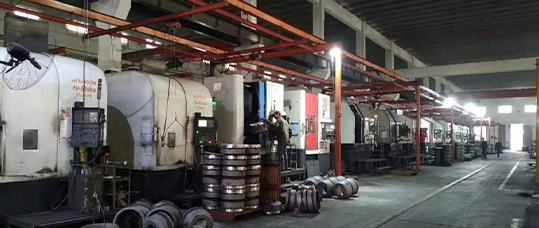
-
 Afrikaans
Afrikaans -
 Albanian
Albanian -
 Amharic
Amharic -
 Arabic
Arabic -
 Armenian
Armenian -
 Azerbaijani
Azerbaijani -
 Basque
Basque -
 Belarusian
Belarusian -
 Bengali
Bengali -
 Bosnian
Bosnian -
 Bulgarian
Bulgarian -
 Catalan
Catalan -
 Cebuano
Cebuano -
 Corsican
Corsican -
 Croatian
Croatian -
 Czech
Czech -
 Danish
Danish -
 Dutch
Dutch -
 English
English -
 Esperanto
Esperanto -
 Estonian
Estonian -
 Finnish
Finnish -
 French
French -
 Frisian
Frisian -
 Galician
Galician -
 Georgian
Georgian -
 German
German -
 Greek
Greek -
 Gujarati
Gujarati -
 Haitian Creole
Haitian Creole -
 hausa
hausa -
 hawaiian
hawaiian -
 Hebrew
Hebrew -
 Hindi
Hindi -
 Miao
Miao -
 Hungarian
Hungarian -
 Icelandic
Icelandic -
 igbo
igbo -
 Indonesian
Indonesian -
 irish
irish -
 Italian
Italian -
 Japanese
Japanese -
 Javanese
Javanese -
 Kannada
Kannada -
 kazakh
kazakh -
 Khmer
Khmer -
 Rwandese
Rwandese -
 Korean
Korean -
 Kurdish
Kurdish -
 Kyrgyz
Kyrgyz -
 Lao
Lao -
 Latin
Latin -
 Latvian
Latvian -
 Lithuanian
Lithuanian -
 Luxembourgish
Luxembourgish -
 Macedonian
Macedonian -
 Malgashi
Malgashi -
 Malay
Malay -
 Malayalam
Malayalam -
 Maltese
Maltese -
 Maori
Maori -
 Marathi
Marathi -
 Mongolian
Mongolian -
 Myanmar
Myanmar -
 Nepali
Nepali -
 Norwegian
Norwegian -
 Norwegian
Norwegian -
 Occitan
Occitan -
 Pashto
Pashto -
 Persian
Persian -
 Polish
Polish -
 Portuguese
Portuguese -
 Punjabi
Punjabi -
 Romanian
Romanian -
 Russian
Russian -
 Samoan
Samoan -
 Scottish Gaelic
Scottish Gaelic -
 Serbian
Serbian -
 Sesotho
Sesotho -
 Shona
Shona -
 Sindhi
Sindhi -
 Sinhala
Sinhala -
 Slovak
Slovak -
 Slovenian
Slovenian -
 Somali
Somali -
 Spanish
Spanish -
 Sundanese
Sundanese -
 Swahili
Swahili -
 Swedish
Swedish -
 Tagalog
Tagalog -
 Tajik
Tajik -
 Tamil
Tamil -
 Tatar
Tatar -
 Telugu
Telugu -
 Thai
Thai -
 Turkish
Turkish -
 Turkmen
Turkmen -
 Ukrainian
Ukrainian -
 Urdu
Urdu -
 Uighur
Uighur -
 Uzbek
Uzbek -
 Vietnamese
Vietnamese -
 Welsh
Welsh -
 Bantu
Bantu -
 Yiddish
Yiddish -
 Yoruba
Yoruba -
 Zulu
Zulu
Jan . 23, 2025 02:08
Back to list
difference between disc brakes and drum brakes
Disc brakes and drum brakes are two primary brake systems integral to automotive safety and performance. Though both serve the same fundamental purpose of stopping a vehicle, they achieve this in distinct ways, each with unique advantages and disadvantages. Here, we delve into the differences between these braking systems, drawing insights from real-world experiences, expert recommendations, and authoritative sources.
Despite their benefits, drum brakes are criticized for their vulnerability to heat. Enclosed by design, they struggle with heat management, leading to an increased risk of performance decline under intensive use. Furthermore, field experts note the susceptibility of drum brakes to water ingress, which can compromise efficiency. Nonetheless, their ability to double as a parking brake in rear applications remains a valued property among certain vehicle segments. Authoritative automotive sources underline the ongoing evolution of braking technologies, with disc brakes gaining predilection due to advances that align with modern performance expectations. However, it is vital to acknowledge the nuances of cost and application. For consumers evaluating brake systems, understanding the implications of vehicle usage, budget constraints, and performance needs is essential. In summary, the choice between disc and drum brakes is not merely a technological decision but stems from specific automotive and economic prioritizations. Disc brakes are favored for their advanced performance metrics, particularly in performance vehicles and demanding driving conditions. Drum brakes maintain relevance for their cost-effectiveness and mechanical simplicity, often implemented in applications where absolute braking performance is balanced against budgetary considerations. Both systems underscore the diversity of automotive engineering, each offering distinct advantages that cater to varied consumer requirements. Ultimately, leveraging a deep understanding of these systems can lead to informed and strategic decisions reflecting both current usage scenarios and future automotive innovations.


Despite their benefits, drum brakes are criticized for their vulnerability to heat. Enclosed by design, they struggle with heat management, leading to an increased risk of performance decline under intensive use. Furthermore, field experts note the susceptibility of drum brakes to water ingress, which can compromise efficiency. Nonetheless, their ability to double as a parking brake in rear applications remains a valued property among certain vehicle segments. Authoritative automotive sources underline the ongoing evolution of braking technologies, with disc brakes gaining predilection due to advances that align with modern performance expectations. However, it is vital to acknowledge the nuances of cost and application. For consumers evaluating brake systems, understanding the implications of vehicle usage, budget constraints, and performance needs is essential. In summary, the choice between disc and drum brakes is not merely a technological decision but stems from specific automotive and economic prioritizations. Disc brakes are favored for their advanced performance metrics, particularly in performance vehicles and demanding driving conditions. Drum brakes maintain relevance for their cost-effectiveness and mechanical simplicity, often implemented in applications where absolute braking performance is balanced against budgetary considerations. Both systems underscore the diversity of automotive engineering, each offering distinct advantages that cater to varied consumer requirements. Ultimately, leveraging a deep understanding of these systems can lead to informed and strategic decisions reflecting both current usage scenarios and future automotive innovations.
Latest news
-
What Are Drum BrakesNewsJul.07,2025
-
Understanding Brake Drum MaterialNewsJul.07,2025
-
Semi-Trailer Brake Drum: A Key Component for Extreme Loads and Long-Distance TransportNewsJul.07,2025
-
Drum Brake Pads for SaleNewsJul.07,2025
-
Brake Drums for SaleNewsJul.07,2025
-
Brake Drum ManufacturerNewsJul.07,2025
-
Aluminum Brake Drums: The Future of High-Performance CarsNewsJul.07,2025
